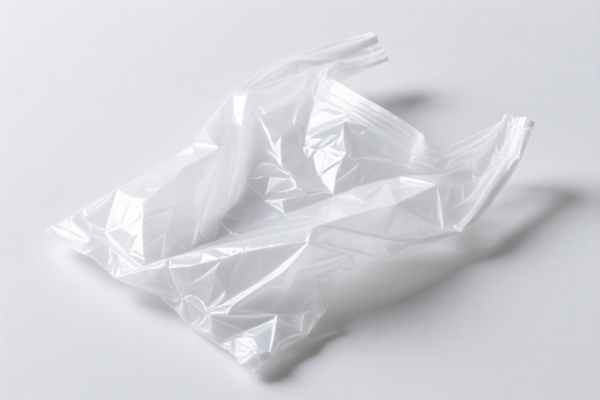| HS Code | Official Doc | Tariff Rate | Origin | Destination | Effective Date |
|---|---|---|---|---|---|
| 8203206060 | Doc | 12¢/doz. + 5.5%+55.0% | CN | US | 2025-05-12 |
| 3926902500 | Doc | 44.0% | CN | US | 2025-05-12 |
| 3926909989 | Doc | 42.8% | CN | US | 2025-05-12 |
| 3901909000 | Doc | 61.5% | CN | US | 2025-05-12 |
| 3901905501 | Doc | 61.5% | CN | US | 2025-05-12 |




Plastic Pliers
Plastic pliers are hand tools used for gripping, bending, and cutting materials, constructed primarily from plastic polymers rather than metal. They offer a lightweight and non-conductive alternative to traditional metal pliers, suited for specific applications where metal tools are undesirable or unsafe.
Material
The body and jaws of plastic pliers are typically made from polymers like:
- Polypropylene (PP): Common for general-purpose pliers due to its good chemical resistance and affordability.
- Nylon: Offers higher strength and abrasion resistance than polypropylene.
- Acrylonitrile Butadiene Styrene (ABS): Provides a balance of strength, rigidity, and impact resistance.
- Polyoxymethylene (POM, also known as Acetal): Known for its high stiffness, low friction, and dimensional stability.
Reinforcements like glass fibers are sometimes added to the plastic to increase strength and rigidity. Cutting edges, if present, may be made of hardened steel inserts or other durable materials.
Purpose
Plastic pliers serve a range of purposes, including:
- Electrical Work: Insulating properties make them safe for handling low-voltage electrical components.
- Electronics Assembly: Gentle grip prevents damage to delicate electronic parts.
- Crafting and Hobby Projects: Suitable for manipulating small parts and materials.
- Gardening: Used for tasks like snipping plant stems or securing plant ties.
- General Gripping and Holding: Providing a secure hold on various objects without marring the surface.
Function
The primary functions of plastic pliers are:
- Gripping: Holding objects securely. Jaw designs vary to accommodate different shapes and sizes.
- Bending: Shaping wires, rods, or other flexible materials.
- Cutting: Some models include cutting edges for snipping wires, ties, or soft materials. (Note: Cutting ability is generally limited compared to metal pliers).
- Crimping: Certain designs can crimp connectors onto wires.
Usage Scenarios
- Electronics Repair: Working with circuit boards, wires, and small components.
- Low-Voltage Wiring: Handling electrical connections in safe manner.
- Model Building: Assembling plastic models and manipulating small parts.
- Jewelry Making: Holding and bending delicate wires and beads.
- DIY Projects: Various tasks where metal tools could cause damage or pose a safety risk.
Common Types
- Combination Pliers: Feature gripping, bending, and cutting capabilities.
- Needle-Nose Pliers: Long, tapered jaws for reaching into tight spaces and manipulating small objects.
- Flush Cutters: Designed for cutting wires flush to a surface.
- Wire Strippers: Incorporate notches for stripping insulation from wires.
- Crimping Pliers: Specifically designed for crimping connectors.
- Diagonal Cutters: Used for cutting wires at an angle.
- Snap-Cut Pliers: Designed for cutting zip ties and small wires.
Plastic pliers are tools primarily used for gripping, twisting, and cutting, constructed from plastic materials. They find applications in various fields, including electrical work, household repairs, and industrial settings where metal tools might cause damage or sparks.
The following HS codes are relevant to plastic pliers, based on the provided information:
-
8203206060: This HS code falls under Chapter 82, which covers “Tools, implements, cutlery, hand tools, and articles of cutlery not elsewhere specified or included.” Specifically, it covers “Files, rasps, pliers (including cutting pliers), pincers, tweezers, metal cutting shears, pipe cutters, bolt cutters, perforating punches and similar handtools, and base metal parts thereof.” The subheading 8203206060 further specifies “Pliers (including cutting pliers), pincers, tweezers and similar tools, and parts thereof: Other: Other (except parts).” This code applies to plastic pliers that don't fall into more specific categories within the subheading. The applicable tax rate is a base tariff of 12¢/doz. + 5.5%, with an additional 25.0% duty, increasing to 30.0% after April 2, 2025, resulting in a total tax rate of 12¢/doz. + 5.5% + 55.0%.
-
3926902500: This HS code is categorized under Chapter 39, which covers “Plastics and articles thereof.” It specifically refers to “Other articles of plastics and articles of other materials of headings 3901 to 3914: Other: Handles and knobs, not elsewhere specified or included, of plastics.” If the plastic pliers consist of plastic handles, this code may be applicable. The applicable tax rate is 6.5% base tariff plus a 7.5% additional duty, totaling 44.0%. This duty increases to 30.0% after April 2, 2025.
-
3926909989: This HS code also falls under Chapter 39, covering “Plastics and articles thereof.” It is categorized as “Other articles of plastics and articles of other materials of headings 3901 to 3914: Other: Other.” This code could apply to plastic pliers that don't fit into more specific categories within Chapter 39. The applicable tax rate is 5.3% base tariff plus a 7.5% additional duty, totaling 42.8%. This duty increases to 30.0% after April 2, 2025.
According to the provided reference material, the HS code options related to 'plastic pliers' are limited, with only the following 3 found.
Customer Reviews
No reviews yet.